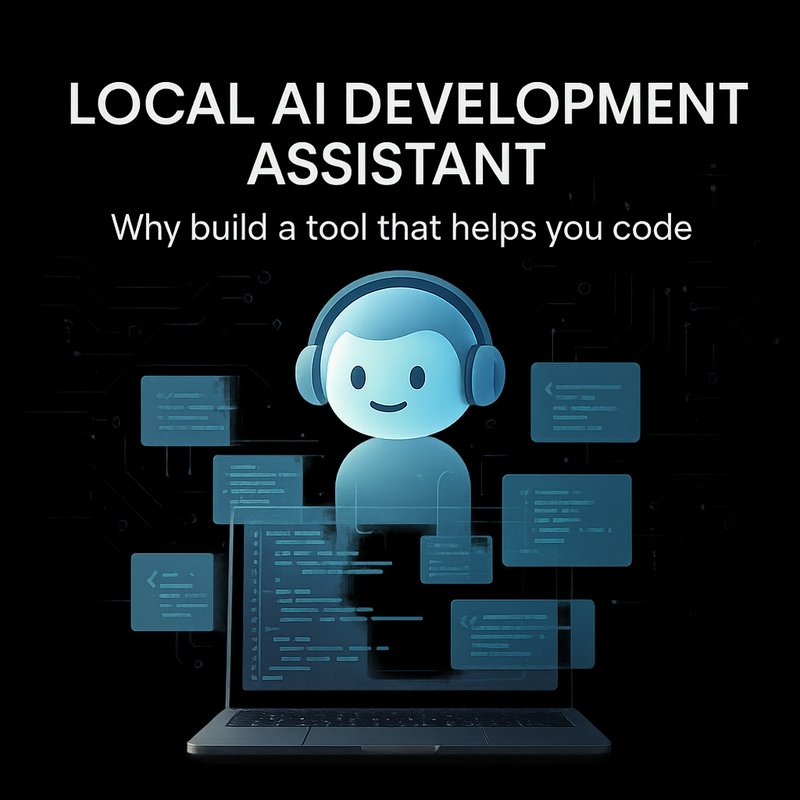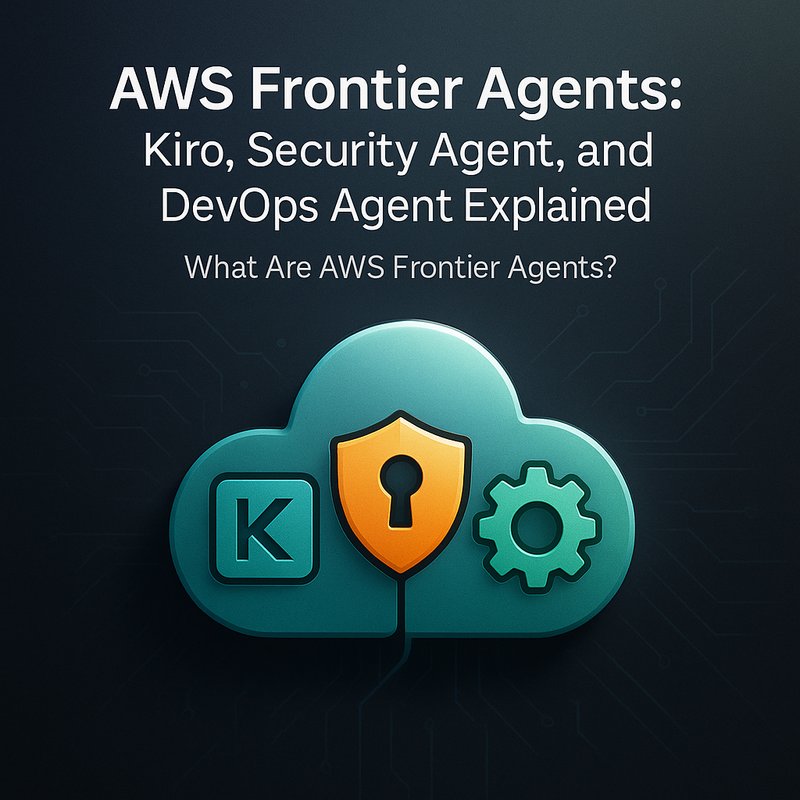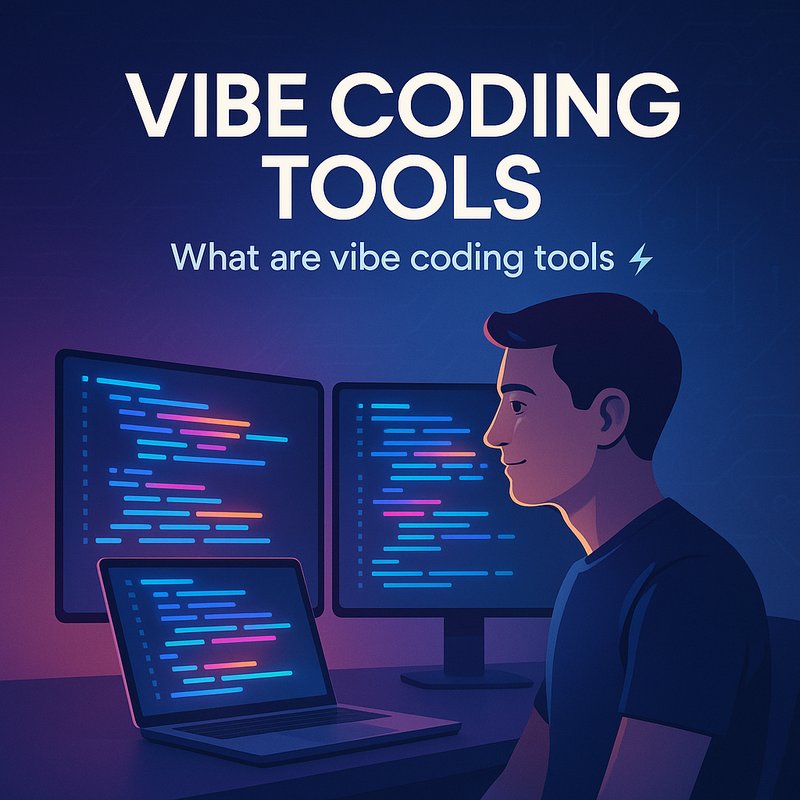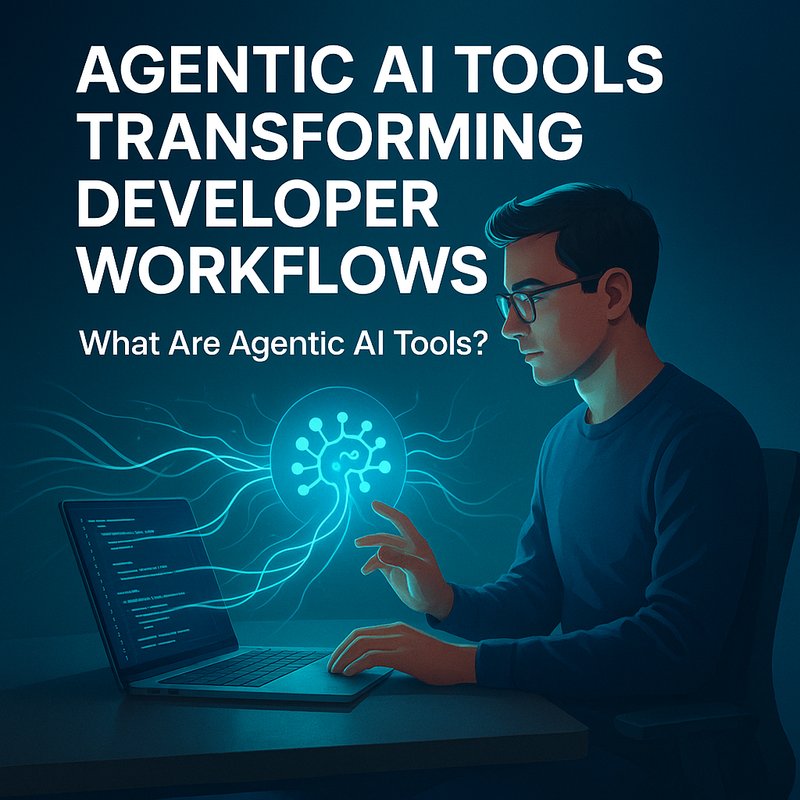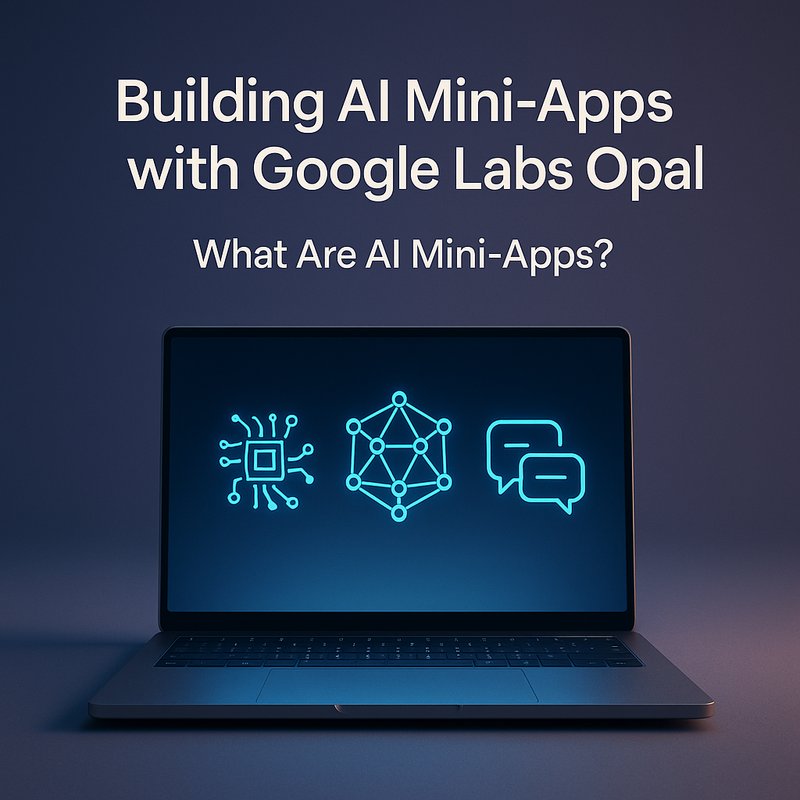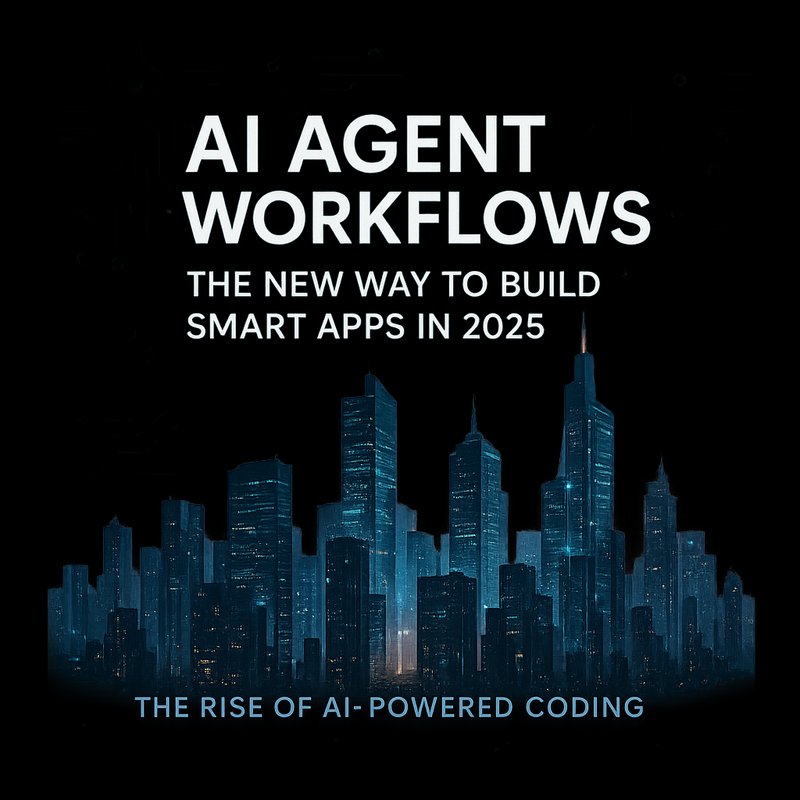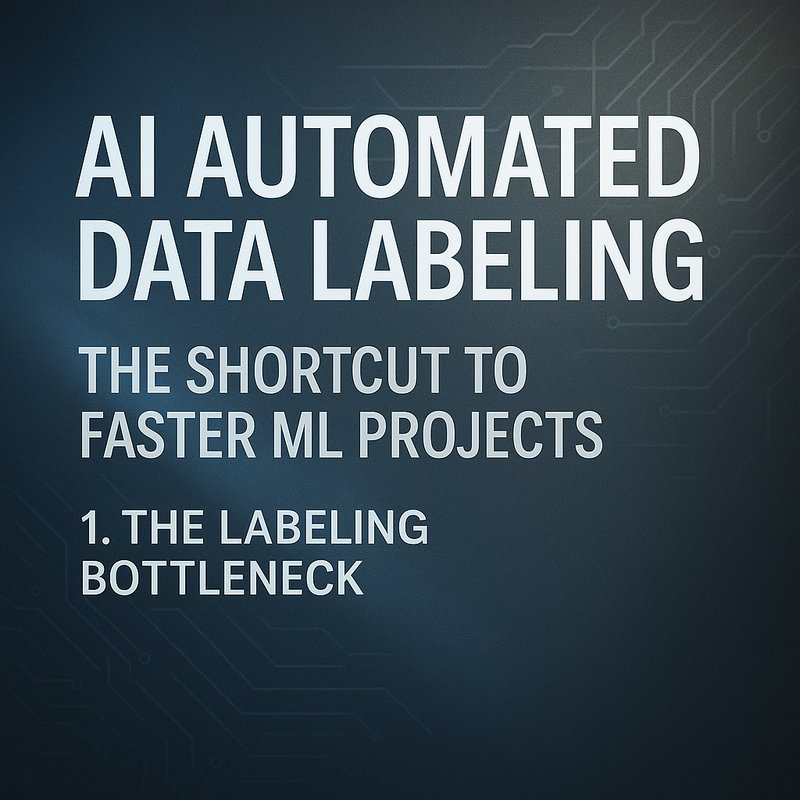Building a Local AI Development Assistant can change how you write code, debug, and learn new tools.
A Local AI Development Assistant runs on your laptop or workstation and helps with code suggestions, docs, refactor, and testing.
A Local AI Development Assistant keeps your code private because it runs locally and does not send secrets to the cloud.
A Local AI Development Assistant can be set up with open models, small tools, and a bit of wiring work.
A Local AI Development Assistant gives you fast feedback during development, and it can be tailored to your stack.
Why build a tool that helps you code
These days, cloud AI is popular, but local helpers have clear wins.
You keep private data in your machine.
You avoid network lag when you need quick answers.
You can tweak behavior and add custom plugins.
You control costs since you do not pay per token to a cloud API.
You get full access to your environment, files, and local packages.
If you care about privacy, speed, or customization, a Local AI Development Assistant is worth the effort.
What a Local AI Development Assistant can do
A small local helper can do a lot. Here are common features.
- Code completion and suggestions inside editors like VS Code.
- Explain code and suggest refactors.
- Write tests and run them locally.
- Generate documentation from comments.
- Search local repos with semantic search.
- Help with build scripts, Dockerfiles, and CI debugging.
- Summarize long logs and stack traces.
- Answer questions about installed libraries.
You do not need a giant model for useful help. Compact open models and smart tooling can cover most tasks.
Core pieces you need
To build a Local AI Development Assistant you need a few parts that work together.
- A model that runs locally. Options include LLaMA family variants, Mistral, or other small models on Hugging Face.
- A runtime like Llama.cpp, GGML, or ONNX for running models on CPU or small GPU.
- A vector store for embeddings, like FAISS or Milvus, to index code and docs.
- A prompt runner or chain library, for example LangChain or a simpler script.
- Editor integration, often via a plugin for VS Code or a command line tool.
- Local file access to read repos, environment variables, and config files.
- A short feedback loop so the assistant learns from your edits (local fine-tuning or simple preference rules).
You can mix and match these parts based on your hardware and skills.
Pick the right model and runtime
Choosing the model matters a lot for local setups.
If you have a dedicated GPU, use a larger model that fits memory.
If you are on CPU or a laptop, pick a small efficient model and run it with Llama.cpp or GGML.
Good sources for models and runtimes:
- Hugging Face model hub for many open models, examples, and weights: https://huggingface.co
- Llama.cpp for local inference and some GPU acceleration: https://github.com/ggerganov/llama.cpp
- ONNX runtimes for converting models to a faster format: https://onnxruntime.ai
- Community posts and threads on Hacker News and GitHub for tips and real user reports: https://news.ycombinator.com and https://github.com
Tip: test a model with simple prompts before committing to a pipeline.
Tooling and editor integration
Make the assistant feel native to your workflow.
- VS Code: build an extension that calls your local server. Many extensions use a local HTTP endpoint or a socket.
- Neovim: use a plugin that runs a local process and shows results in floating windows.
- CLI: a quick start is a command line tool that accepts file paths and returns suggestions.
- Web UI: a tiny local web server with a short UI is useful if you want drag and drop or file uploads.
For example, a VS Code extension can call your local assistant to generate tests for the current file, then insert the test file in the right folder.
Integrate with your terminal so you can ask the assistant to run tests, then summarize failures.
Set up semantic search with embeddings
A powerful feature is semantic search across repos and docs.
Steps:
- Generate embeddings for all your code, README, and docs using a small embedding model.
- Store vectors in FAISS or similar.
- On a query, embed the question and fetch nearest neighbors.
- Use the returned snippets as context for the model to answer.
This helps when you want the assistant to refer to your codebase and not generic web knowledge.
Use libraries like sentence-transformers on Hugging Face for embeddings, and FAISS for the index.
Prompt design for practical help
Good prompts are key. Keep prompts simple and precise. Examples:
- "Explain the function below in plain English and list potential edge cases."
- "Write unit tests for this function using pytest and include three cases."
- "Refactor this function to improve readability without changing its outputs."
Limit context length by providing only the relevant file or function and a short history. Too much context can confuse smaller models.
Store prompt templates so the assistant behaves consistently.
Building a small local pipeline: step-by-step
Here is a simple plan you can follow in a few hours.
-
Pick a model that works on your machine.
- If you have an Nvidia GPU, try a 7B parameter model.
- On CPU, try a 1.3B or quantized 3B model with Llama.cpp.
-
Install a runtime.
- Llama.cpp for LLAMA-like models.
- ONNX runtime if you converted a model.
-
Create a tiny local server.
- A Python Flask or FastAPI server that loads the model and listens on a port.
- Add endpoints for prompt completion and embeddings.
-
Index your repo.
- Walk files, extract code blocks, readme, and docs.
- Create embeddings and save them to a FAISS index.
-
Build a small connector.
- A VS Code extension or simple CLI that calls the server.
- For VS Code, use the extension API to insert text or show output.
-
Try tasks.
- Ask for a code explanation.
- Ask to write tests.
- Ask to search for a function usage.
-
Iterate on prompts and indexing.
This setup is lightweight and gives immediate value.
Example: Write unit tests with the assistant

A frequent request is to generate tests. Here is how to do it safely.
- Provide the function and a short description to the model.
- Ask for tests that use actual inputs and verify outputs.
- Run the generated tests locally in a sandboxed environment.
- Review the tests and run them.
Always run tests locally before committing. The assistant may make assumptions about external systems.
Keep secrets safe
Local assistants reduce secret leakage, but you must still be careful.
- Do not expose your local server to the internet without authentication.
- Keep API keys out of prompts.
- If you use cloud models for some tasks, separate those flows and mark them clearly.
- Use OS-level permissions and encrypted disks if you store sensitive data.
If you need to mix local and cloud, tag which calls go remote and make sure to scrub sensitive content.
Performance tuning tips
To get snappy responses:
- Use quantized models to reduce memory and speed up inference.
- Cache embeddings and common prompts.
- Limit context length to the most relevant snippets.
- Run a small optimized server process rather than spinning up a heavy tool every time.
If latency is still an issue, consider a hybrid approach: local tiny model for short replies and a larger local GPU model for heavy tasks.
Advanced: local fine tuning and preference learning
If you want the assistant to match your style:
- Use a small fine-tuning dataset of your commits, code comments, and preferred patterns.
- Do parameter efficient fine tuning methods like LoRA or adapters to avoid full retrain.
- Keep a small preference store for how you like suggestions (e.g., single-line vs multi-line, docstring style).
Fine tuning on local data helps the assistant suggest code that fits your style and project conventions.
When to use a cloud model instead
Local is great, but sometimes cloud models are useful.
- When you need the very best model that cannot run locally.
- For heavy NLP tasks like large scale summarization across many repos.
- When you want low setup time and are okay with sending non-sensitive code to a cloud provider.
You can design a hybrid flow where private code stays local and generic tasks use the cloud. Make sure to follow security best practices and read provider docs from OpenAI or Anthropic to choose the right option: https://openai.com and https://www.anthropic.com
Open-source tooling and communities
There is a big community around local model tooling.
- Hugging Face for models and datasets: https://huggingface.co
- Llama.cpp for lightweight inference: https://github.com/ggerganov/llama.cpp
- LangChain for chains and prompt management: https://github.com/langchain-ai/langchain
- FAISS for vector search: https://github.com/facebookresearch/faiss
Also check Hacker News and GitHub discussions to see how others solve real problems: https://news.ycombinator.com and https://github.com
Example architecture diagram (simple)
- Editor plugin -> Local assistant server -> Model runtime + FAISS index -> Local files
- Optional: Hybrid switch to cloud for heavy tasks
Image: small UI showing editor, local server, model, and index.

Image alt text: Local AI development assistant interface with Local AI Development Assistant features
Integrating with Neura tools
If you use Neura apps, some parts fit well.
-
Neura ACE helps with content and workflow automation and can inspire how you set up prompt templates. See Neura ACE: https://ace.meetneura.ai
-
Neura Router connects to many models and can be useful if you expand to hybrid flows: https://router.meetneura.ai
-
Neura Artifacto is handy for quick local experiments with content and image analysis when you need extra tools: https://artifacto.meetneura.ai
Check Neura product docs for integration patterns: https://meetneura.ai/products and team info at https://meetneura.ai/#leadership
Safety and guardrails
Local assistants need guardrails too.
-
Implement a simple policy layer that blocks dangerous or non-permitted commands.
-
Add confirmation steps for actions that change files. For example, ask before committing or pushing.
-
Maintain a changelog of assistant actions so you can audit what it changed.
-
Use git branches to experiment, not the main branch.
These steps reduce risk and keep you in control.
Common pitfalls and fixes
-
Slow model responses: switch to quantized model or smaller context.
-
Wrong or misleading answers: improve prompt with more context and examples.
-
Overly verbose code suggestions: add a requirement to keep suggestions concise.
-
Breaking changes: always run tests locally after a suggested change.
-
Index staleness: schedule daily or weekly re-indexing of your repo.
What I see developers use it for most
-
Writing tests.
-
Quick code explanations.
-
Debug help by pasting error logs.
-
Generating boilerplate code: CI YAML, Dockerfiles, basic scripts.
-
Finding where a function is used across large codebases.
These small wins add up and save time.
Roadmap ideas for a project
If you want a long-term project plan:
-
Week 1: Proof of concept server and editor integration.
-
Week 2: Add embeddings and semantic search.
-
Week 3: Add test generation and run tests.
-
Week 4: Add preference learning and a safe commit flow.
-
Month 2: Add UI and team sharing features.
-
Month 3: Evaluate hybrid cloud options and deployment.
Keep it small and iterate based on what helps you most.
Final thoughts
A Local AI Development Assistant gives you faster feedback, better privacy, and a tool that fits your workflow.
Start small, focus on a few tasks, and expand.
If you like control and speed, building a local helper is well worth the time.
The bottom line? Try one simple feature first, like test generation or semantic search, and build from there.
